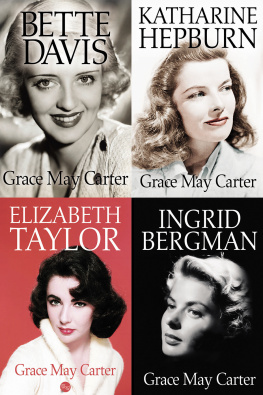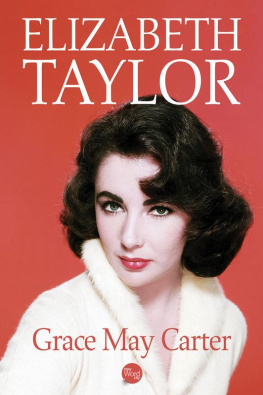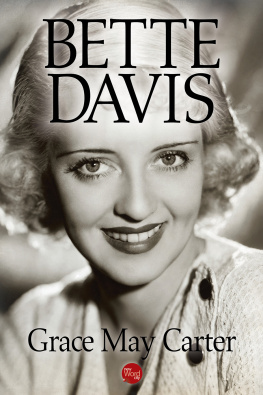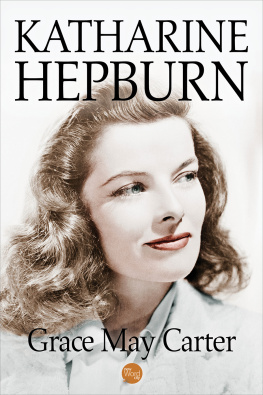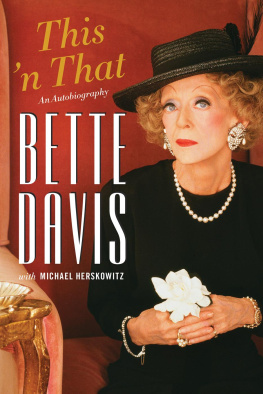Ever since she arrived in the United States from Sweden in 1939, several Ingrid Bergmans have occupied the public imagination.
But which was the real one?
Was she the embodiment of luminous, pious devotion revered by filmgoers for such roles as the nun in The Bells of St. Marys and Saint Joan in Joan of Arc? Or was she the duplicitous, unrepentant harlot who abandoned her husband and child to have an affair with the Italian director Roberto Rossellini in 1950 a scandal that led to her effective banishment from Hollywood for years?
Or was Bergman the enigmatic, misunderstood artist embraced by a forgiving public after her return to the United States in 1956 when she won an Academy Award for her performance in Anastasia?
As the actress herself put it, mystified by her own metamorphosis, Ive gone from saint to whore and back to saint again, all in one lifetime.
The real Ingrid Bergman is, of course, far more complicated than any of these characterizations would suggest. Indeed, they contradict each other so sharply they couldnt possibly all be true. And yet the clashing perceptions of Bergman shaped the trajectory of her life so powerfully that they provide a useful outline for the arc of her career: her rise as a radiant Hollywood star in the forties when she appeared in her most famous film, Casablanca; her fall in Europe in the fifties; and her triumphant third-act comeback that lasted for two-and-a-half decades until her death in 1982 from breast cancer at the age of sixty-seven.
Within that tumultuous narrative were several crucial relationships. She was married three times at twenty-one to Swedish dentist Petter Lindstrm, whom she divorced at thirty-four to wed Rossellini; then, at forty-three, a year after ending her marriage to Rossellini, she married theatrical entrepreneur Lars Schmidt. Bergman divorced Schmidt in 1975, though he was by her side when she died. She had four children one with Lindstrm and three with Rossellini, including Isabella Rossellini, who became a well-known model and film actress.
Bergman also had some notable affairs: with actor Gregory Peck while they co-starred in the 1945 Alfred Hitchcock film Spellbound; with celebrated Hungarian war photographer Robert Capa; and with The Wizard of Oz and Joan of Arc director Victor Fleming, among others. And yet as various men came and went and children were born and grew up, her work was the one constant in her life. It steadied her, kept her moving forward, and fulfilled her in a way that nothing else ever could.
I have had my different husbands, my families, she once said. I am fond of them all, and I visit them all. But deep inside me, there is the feeling that I belong to show business.
Though known primarily for her fifty big-screen films, the prolific Bergman also appeared in five television movies, two dozen radio dramas, and eleven stage productions, including challenging works by George Bernard Shaw, Eugene ONeill, and Henrik Ibsen. She performed in five languages English, French, German, Italian, and Swedish a rarity for actors of any era. And in 1980, she published her memoir, Ingrid Bergman: My Story, to clear up some of the misperceptions about her life that she knew would haunt her children if she didnt set the record straight.
Through it all, Bergman was the anti-diva. While many actors required chauffeured limousines, she drove herself around Hollywood in a small gray coupe. She usually wore little or no makeup in public. While some actors were mercurial, demanding and late to the movie set, Bergman was always punctual, professional, and fully prepared. Its not uncommon for actors to renegotiate or renege on contracts the moment they become successful, but Bergman was known for honoring her agreements and keeping her word.
On screen, Bergman was unique not just for her beauty (cameramen loved her bulletproof angles, meaning she could be shot from any side.) She was also known for her intelligence and natural, unaffected acting style. The producer David O. Selznick, who discovered her, once called her the most completely conscientious actress he had ever worked with.
And more than most film stars of her day, Bergman was extremely versatile: She was able to fully inhabit a wide variety of characters and to excel in comedy, drama, and romance. There is a kind of acting in the United States, she once said, especially in the movies, where the personality remains the same in every part. I like changing as much as possible.
Wrote Murray Schumach in The New York Times: Her beauty was so remarkable that it sometimes seemed to overshadow her considerable acting talent... the expressive blue eyes, wide, full-lipped mouth, high cheekbones, soft chin, and broad forehead projected a quality that combined vulnerability and courage, sensitivity and earthiness, and an unending flow of compassion.
David Noh in Film Journal International said that Bergman also brought a new emotional almost Mediterranean rawness to the screen with an intensity unseen before except in the more-stylized manner of Bette Davis.
That beauty, talent, and passion would earn Bergman three Academy Awards, two Emmys, two Golden Globes, and a Tony. In 2007, the American Film Institute ranked her as the fourth-greatest female screen legend of classic American cinema behind only Katharine Hepburn, Bette Davis, and Audrey Hepburn.
Even towards the end of her life, as Bergman struggled with cancer for eight painful years, she performed at an astonishingly high level. During this period, she tackled two of her most demanding roles a concert pianist in Autumn Sonata directed by Ingmar Bergman (no relation) and Israeli Prime Minister Golda Meir in A Woman Called Golda, the last role of her life, for which she won a posthumous Emmy and Golden Globe.
And yet the key to the mystery of Ingrid Bergman lies less in her career accomplishments than her childhood: She lost her mother to a gallbladder condition at age two and her father to cancer when she was thirteen, leaving her an orphan in the care of various aunts and uncles.
That is where her story must begin, a tale the public has been fascinated by and has debated vigorously since Humphrey Bogart famously looked at her in Casablanca and said, Heres looking at you, kid.
Ingrid Bergman was born on August 29, 1915, at Number 3 Strandvgen, a sixth-floor apartment in a building overlooking the harbor in Stockholm. Her parents, Justus Samuel Bergman and his German wife, Frieda Adler Bergman, named their only child for Swedens royal princess, then just two years old.
Though the rest of Europe was ensnared in World War I, the neutral Swedes carried on as usual. The Bergmans attended the nearby Royal Opera House and Royal Dramatic Theater. They drank wine and hot chocolate as they visited the art galleries and tea rooms along their busy street, which happened to be Stockholms grand boulevard.
With a long-standing tradition of free speech - guaranteed by the government since 1766 Sweden has always encouraged and prized artistic expression and intellectual discourse stirred by luminaries such as playwright August Strindberg and Nobel Prize-winning novelist Selma Lagerlf. But the countrys most popular art form, by far, was its thriving film industry.

